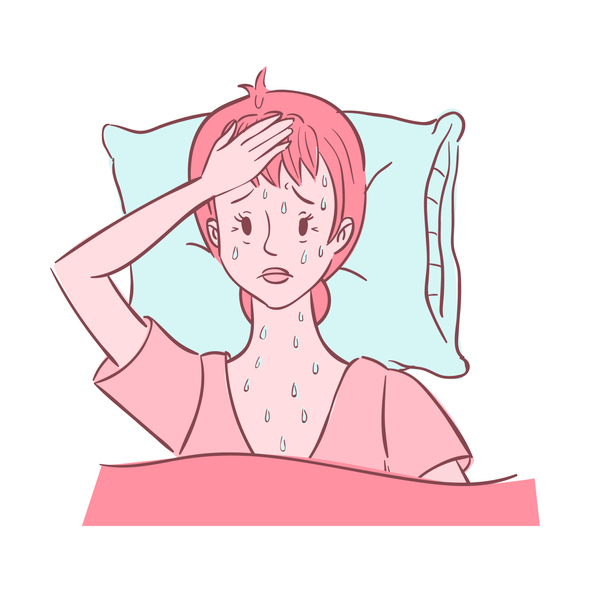Night Sweats And What To Do About Them
If you find yourself dreading going to bed as night time flushes and sweats disturb your sleep here are some helpful tips.

Are you one of those unfortunate women who suffer both daytime hot flushes and night time sweats?
It may seem like a different condition, but it is actually just a continuation of the same problem. Unfortunately we are aware of it differently at night.
At menopause with the constantly changing hormone levels our own natural temperature regulator – the hypothalamus – gets confused and thinks the body is overheating.
It starts to do its job to reduce that by sending blood to the surface (our red faces) and stimulates the sweat glands to cool us down.
Simple tips that can help
A lot of this is just common sense, but once menopause kicks in it is sometimes hard to follow through on acting or thinking logically – brain fog is another common symptom!
You probably already do all these, but just check to see if there are any you have missed.
– Keep the water temperature down in the bath or shower.
– Use an antiperspirant daily.
– Wear loose-fitting clothes and go for natural fibres that breathe, like cotton.
– Avoid flush triggers such as alcohol, caffeine, spicy food and smoking.
– Stay fit as exercise has been shown to reduce the impact of flushes.
– Watch your weight as extra pounds can cause more flushes.
– Don’t let your fluid intake drop, hydrate often.
– Regulate the temperature at night with light bedclothes and good ventilation.
What can cause it or make it worse?
– Oestrogen dominance is linked to flushes, and weight gain, so try to get your hormone balance right.
– Emotional upset and stress increases adrenaline levels, making your sweat glands work harder and so you sweat more.
– Illness, fever or infections cause the body’s temperature to rise as it tries to kill off a viral or bacterial infection.
– Side effects of some medication or treatment such as for breast cancer for example.
– Sleep problems stress the body, and that can increase flushes, as can sleep apnoea.
– Blood sugar levels, both high or low blood, have been implicated in flushes and sweats so try to keep levels even.
What can help?
This may happen to you only occasionally, and are not always hormonal, but if they are constant and disrupting your life then check the following:
– oestrogen dominance is a major factor so check your hormone balance. For sweats not responding to progesterone alone, then a combination cream of both progesterone and oestrogen can be more effective.
– being overweight can increase the flushes and sweats, even if it’s by just a few pounds. Take a look at where in your diet you could make some changes.
– exercising will help as even a gentle amount reduces stress as well as helping with weight control.
– stress affects your hormones in so many ways and unfortunately flushes and sweats make you anxious. That increases your stress levels, so again do what you can to minimise any stress factors
– take action if it is impacting your life and that may mean practical measures like cool clothing and a diet that supports you.
Consider other measures such as bioidentical hormones, herbs, homoeopathy and alternative treatments which can all help.
If your sweats are very severe then speak to your doctor to eliminate non hormonal causes.
Helpful information:
The majority of women find flushes dealt with sufficiently by supplementing bioidentical progesterone, but if your flushes and night sweats are severe then you will need a little extra help.
So it may be more effective to combine progesterone with some oestrogen as a better solution for you.
There is no doubt such severe symptoms are very stressful, and if you would like a little extra help with that, surprisingly, your diet may be a good place to start.
This article can help you to do that.
https://anna.blog.wellsprings-health.com/how-your-diet-can-help-keep-you-calm/


















